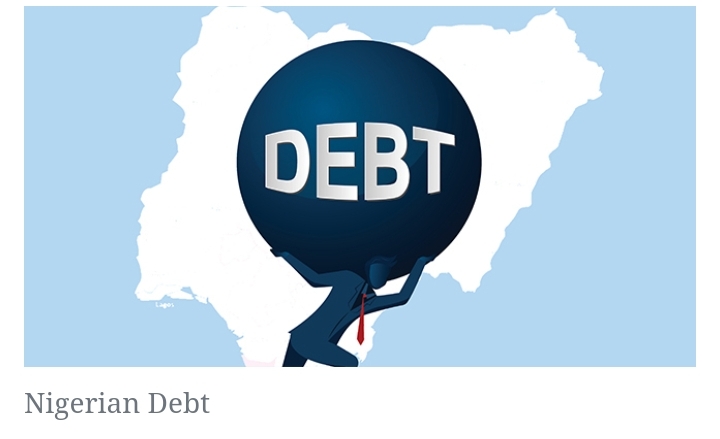Nigeria’s State Debts Surge Despite Improving Revenues: A Closer Look
As of mid-2024, Nigeria’s 36 states are grappling with mounting debt, which has reached a staggering N11.47 trillion by June 30, 2024. This marks a 14.57% increase from N10.01 trillion in December 2023, according to data from the Debt Management Office (DMO). Despite growing allocations from the Federal Accounts Allocation Committee (FAAC) and efforts to boost internally generated revenues (IGRs), states’ financial health is under significant strain.
The rise in debt is largely driven by foreign loans. The external debt for states and the Federal Capital Territory (FCT) climbed from $4.61 billion in 2023 to $4.89 billion in 2024. This increase is partly attributed to the devaluation of the naira, which saw the exchange rate rise from N899.39/$1 to N1,470.19/$1 in the same period. In naira terms, this meant a sharp 73.46% jump in foreign debt, from N4.15 trillion to N7.2 trillion. On the other hand, domestic debt for these states decreased from N5.86 trillion to N4.27 trillion.
This growing debt burden comes at a time when states are already heavily reliant on federal allocations to meet their financial obligations. According to BudgIT’s 2024 State of States report, 32 out of 36 states depended on FAAC for at least 55% of their total revenue in 2023. This dependence paints a troubling picture of fiscal vulnerability, with state governments exposed to the volatility of crude oil prices and other external economic shocks.
The Growing Debt Crisis
The debt crisis is not new. In 2023, Nigeria’s states saw a 38% surge in debt, climbing from N7.25 trillion in 2022 to N10.01 trillion by the end of 2023. Domestic debt alone increased by N606.12 billion, while external debt rose by 4.1%. The liberalization of the exchange rate, which contributed to the depreciation of the naira, worsened the situation, as states’ foreign loan repayment obligations ballooned in local currency terms.
Lagos State remains the largest borrower among the states, particularly in foreign currency, holding 26.9% of the country’s total foreign debt, equating to around $1.24 billion. This is a concerning trend, as states’ foreign debt exposure continues to increase, further complicating their fiscal management.
IGR Growth and Fiscal Sustainability
On a positive note, the internally generated revenue (IGR) across Nigeria’s states saw a significant increase in 2023, growing by 20.33% to N2.19 trillion from N1.82 trillion in 2022. This growth, however, was uneven. Six states, including Zamfara, saw their IGRs rise by over 50%, with Zamfara experiencing the most impressive growth of 240.22%. But not all states fared equally. Seven states, including Jigawa, saw negative growth in their IGRs.
Lagos and Rivers states stand out for their ability to generate sufficient IGR to cover their operating costs, with ratios of 118.39% and 121.26%, respectively. In contrast, states like Akwa Ibom, Bayelsa, and Taraba require over five times their IGR to meet operational expenses, underscoring the precariousness of their financial positions.
Over-Reliance on Federal Allocations
One of the most alarming findings from the BudgIT report is the heavy dependence of states on FAAC allocations. A total of 14 states rely on federal transfers for at least 70% of their total revenue, and 21 states depend on these transfers for over 80% of their recurrent expenditure. This reliance underscores the fragile financial sustainability of many state governments, leaving them vulnerable to any disruption in the flow of federal funds.
In 2023, despite the challenges, the total revenue generated by the states grew by 31.2% to N8.66 trillion, with Lagos contributing N1.24 trillion (about 14% of total revenue). Gross FAAC receipts increased by 33.19%, reaching N5.4 trillion, which accounted for 65% of the revenue growth. However, even with this improvement, the states’ financial health remains heavily dependent on external sources of funding.
The Path Forward: Building Fiscal Sustainability
The key to improving the fiscal sustainability of Nigeria’s states lies in their ability to bolster their IGRs. BudgIT advocates for a comprehensive approach to domestic resource mobilization, including digitizing revenue collection, eliminating cash-based transactions, and implementing better tax enforcement measures. States also need to leverage their natural resources, technology, and public-private partnerships to create sustainable revenue streams.
Furthermore, a concerted effort to harmonize taxes, fees, and levies, as well as improve the ease of doing business, will be crucial in diversifying revenue sources and reducing dependence on federal allocations. States that are able to build stronger fiscal foundations will be better positioned to invest in critical infrastructure, human capital, and social programs, ensuring long-term economic resilience.
while Nigeria’s states have made strides in improving their revenue generation, the heavy burden of debt and reliance on federal transfers remains a critical challenge. Without serious reforms aimed at strengthening their internal revenue systems, the financial health of many states will continue to be precarious, and their vulnerability to external economic shocks will persist.




